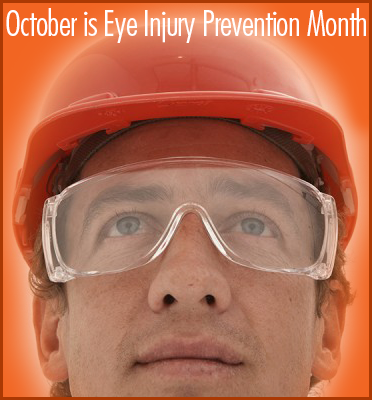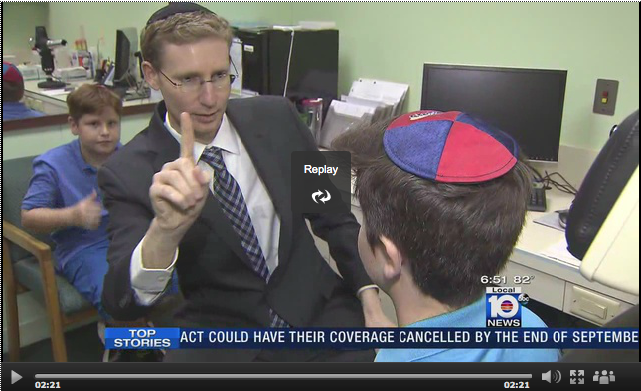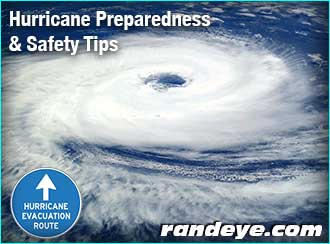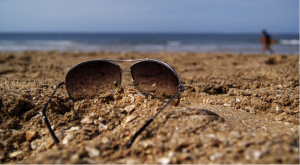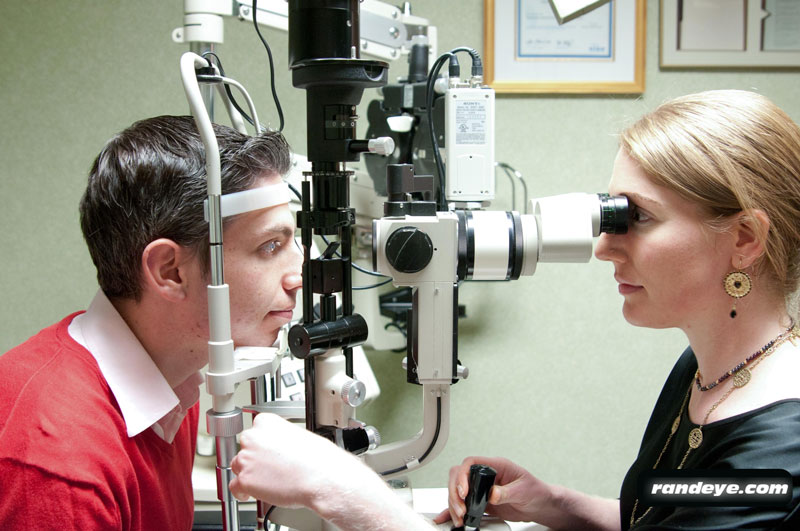Driver Saves Patient’s Life
Rand Eye Institute’s Rick Elya has made it to the news for his heroism! We are proud of our employees who take pride in serving the community and doing what’s best for our patients. Good job, Rick!
Read Full Article and Watch the Video on WSVN 7 News!
https://www.wsvn.com/story/26718628/clinic-driver-saves-patients-life-during-route
How to Choose the Right Protective Eye Wear
Choosing the right protective eye wear can stave off eye-related injuries at work and at home, for both adults and children alike. Wearing the proper protection, especially among people who wear contacts or have had corrective eye surgery can be invaluable when it comes to preserving sight and preventing eye trauma.
Shopping for these glasses does not need to be such a difficult task.
- All lenses should be made of polycarbonate, since that is the strongest lens material available. All polycarbonate lenses absorb ultraviolet light and are scratch resistant, which is also a plus in protecting your eyes.
- Be sure to only use lenses that are approved by the American National Standards Institute. The ANSI sets the safety standards for lenses based on their performance and what they are designed to be used for.
- Be sure to try on the glasses while shopping to make sure they fit properly.
- There are different types and styles of glasses depending on what you will be using them for. Whether it’s for work, sports or at home, ask a specialist to help you find a pair that is right for you.
Some Do’s and Don’ts for Proper Use of Eye Protection
- Do clean your eye protection regularly. Follow manufacturer’s instructions.
- DON’T use goggles if they are scratched, don’t fit properly or the elastic band is frayed.
- DO inspect your eye protection each time before use.
- DON’T use safety spectacles if they are scratched, bent or don’t fit properly.
- DON’T use eye protection that is not designed to protect you from the actual hazards you will encounter while performing your job duties.
- DO make sure you actually use your eye protection.
- DON’T use eye protection equipment if it doesn’t fit properly, obstructs your movement or blocks your vision.
October is Eye Injury Prevention Month
Over 2 million people in the United States suffer from eye injuries, annually. Many of these injuries are caused during accidental occurrences, such as car accidents or falls, while others occur due to the negligence of not wearing proper protective eye wear.
As safe as we feel in the comfort of our own home, half of all eye-related injuries happen here. Ninety percent of these injuries could have been prevented or reduced simply by wearing protective eyewear. You can never be too safe when it comes to preserving the health of your eyes and preventing injuries from occurring.
Always take caution while partaking in household activities and chores.
- In the House – When using household chemicals and bleach always read instructions and labels carefully. Be careful while pouring or spraying, because if these chemicals get into your eye it can cause anything from minor irritation to a chemical burn. If this does happen, flush the eye by putting your head under warm running water and rinse the eye out for 15 minutes. Always use these products in a well-ventilated area.
- In the Garden – Wearing protective eyewear while operating a lawnmower, power trimmer or any other type of machinery will prevent objects like grass, rocks and stones from getting into your eye. Also be sure to warn bystanders when using these machines so they are aware of the dangers and take protective measures, as well.
- In the Workshop – Keep your eyes safe by wearing safety goggles while working to prevent flying fragments, fumes, dust particles, sparks and splashing chemicals from entering your eye.
Back to School – Dr. David Rand, MD in the News!
Rand Eye Institute’s Dr. David Rand, MD in the News!
Back to School is just around the corner and final preparations under way, but have you scheduled your child’s eye exam?
Be sure to click on the link below to hear from WPLG-Local 10 Health Reporter, Kristi Krueger, the importance of Back to School eye exams.
http://www.local10.com/news/vision-tests-recommended-for-kids-heading-back-to-school/27452116
Children’s Eye Health & Safety Month
Children’s Eye Health & Safety Month/Back to School Eye Health
It’s that time of year again to start packing the lunchboxes and waiting in car lines: BACK TO SCHOOL!
Preschooler. Between the ages of 3 and 3½, a child’s vision and eye alignment should be assessed by a pediatrician, family doctor, ophthalmologist, optometrist, orthoptist or person trained in vision assessment of preschool children.
School age. Upon entering school, or whenever a problem is suspected, children’s eyes should be screened for visual acuity and alignment by a pediatrician, family doctor, ophthalmologist, optometrist, orthoptist or person trained in vision assessment of school-aged children, such as a school nurse. Nearsightedness (myopia) is the most common refractive error in this age group and can be corrected with eyeglasses. If an alignment problem or other eye health issues is suspected, the child should have a comprehensive exam by an Eye M.D.
Summer Safety Tips
Summer’s in full swing! Be safe and protect your eyes while you are out and about in the sun. The Rand Eye Institute wants to assure everyone is taking proper care of their eyes!
View Our Summer Eye Safety Tips:
Keeping Your Vision Safe During the 4th of July
As we all know fireworks are fun and exciting to watch, but did you know that fireworks injure over 9,000 people each year? Of the 9,000 plus people that are injured, 47% of those people are bystanders. The safest way to enjoy fireworks for this upcoming 4th of July is to remain at least 500 ft. away from where the fireworks are being lit. If you or someone else are setting off fireworks at home or in the street, you should follow these steps:
- Make sure the person lighting the fireworks has protective eyewear.
- Make sure they never try to relight a “dud” firework.
- Make sure only one firework is being lit a time, never attempt to light more than one.
- Never aim a firework at a person, pet, vehicle, house, or any structure or something flammable.
- Always keep a supply of water near by at all times as a safety precaution.
- When storing fireworks, keep them in a cool, dry and safe place, away from children and pets.
- Lastly, one should leave the area where the fireworks are being shot off from, unless it is a trained professional, in which case one should remain at least 500 ft. away.
In the event of a fireworks eye injury, one should: “Get medical attention right away”!
Here is the list of things to avoid:
- Do not rub your eyes
- Do not rinse your eyes
- Do not apply pressure
- Do not apply ointments Do not remove an object from your eye (if one gets stuck there)
- Lastly, do not take blood thinning pain drugs, such as aspirin or ibuprofen.
The fireworks that cause the most injuries are Firecrackers (1200 injuries), Sparklers (600 injuries), and Bottle Rockets (600 injuries). While fireworks are not banned in every state, in order to enjoy fireworks while staying safe this 4th of July, leave the lighting and setting up to the professionals.
KEEP an ‘EYE’ on Hurricane Related Injuries
For Immediate Release: May 30, 2014
Rand Eye Institute offers Hurricane Eye Safety Tips in an Effort to Reduce and Prevent Pre- and Post- Storm Eye Injuries
Deerfield Beach, Fla. — In response to the rising number of hurricane related injuries over the past hurricane seasons, the Rand Eye Institute, a comprehensive eye care and surgical facility in Deerfield Beach, is assisting South Florida residents anticipate and prepare for an increasing number of storm related eye injuries. Rand Eye Institute’s “Hurricane Eye Safety Tips” can be found at: randeye.com
While a number of injuries are directly caused by the storm’s landfall and deteriorating weather conditions, the majority of reported incidents are caused indirectly, occurring as a result of pre- and post-storm preparation and recovery efforts. Of these, 90 percent are avoidable. By taking steps laid out by Rand Eye Institute, before, during and after a storm, many of these potential hazards can be reduced and potentially prevented.
“Eye injuries have increased in past storms. Anticipating and preparing for risks that can potentially lead to an eye injury should be part of any emergency disaster plan,” says William J. Rand, MD chief surgeon and medical director of the Rand Eye Institute.
Because flying fragments of metal, wood, concrete and other building materials, along with windblown dust and debris account for the highest number of eye injuries, one of the simplest ways to prevent eye injuries is to wear protective eye goggles or safety glasses, which should be included with other hurricane supplies. Wearing protective eyewear, even when putting up shutters, removing debris or working with both hand and power tools, can reduce the risk of injuring the eye.
The Rand Eye Institute also recommends:
- Avoid rubbing or touching irritated areas of the eye – especially if you suspect the presence of debris particles or chemical solutions. Wash and rinse with clean, preferably bottled water.
- Having essential medications, including preservative-free eye drops on hand
- Sterilizing contact lenses more frequently – especially when dealing with unsanitary conditions
- Current prescription eye glasses and copy of original prescription
- Preparing a list of all physician emergency contact numbers, including your ophthalmologist and/or optometrist
- Seeking immediate medical attention if you experience a serious eye injury or problem.
Call 954-782-1700 or toll-free 1-800-782-1711
With a compliment of Board Certified Ophthalmologists, who are on call to address your most immediate concerns, the Rand Eye Institute, an emergency generator-powered facility, provides 24-hour emergency care, with an on-site, fully licensed and Joint Commission accredited ambulatory and surgical center, capable of treating a full-range of eye injuries.
Specializing in refractive surgeries such as custom no-flap laser vision correction, lens exchange procedures, custom laser cataract surgery, vitreo-retinal surgery and corneal transplantation; the Rand Eye Institute is a comprehensive eye care and surgical facility, which offers a full-range of patient services, including routine eye examinations, treatment for dry eye syndrome, advanced testing and sophisticated ophthalmic treatments for various eye conditions. The Rand Eye Institute’s compliment of qualified, Board certified doctors and professional staff provide patients with quality and compassionate care.
Located on the first floor is the Rand Surgical Pavillion, a state-of-the-art fully licensed and Joint Commission accredited surgical facility, which offers the highest level of surgical care, surpassing nationally accepted standards for safety, sterility, technology, and quality outcomes.
Founded in 1979 by William J. Rand, M.D., one of the most experienced eye surgeons in the country, the Rand Eye Institute is centrally located in Southeast Florida at 5 West Sample Road in Deerfield Beach, FL 33064. For more information about the Rand Eye Institute, please visit www.randeye.com or call 1-800-782-1711.
UV Exposure to the Eyes and Wearing your Sunglasses
A recent poll taken through the American Academy of Ophthalmology (AAO), shows that there is a need for greater awareness regarding the sun’s sensitivity and UV safety. In addition, the poll also states that the majority of Americans are unaware that taking common everyday drugs, while having light-colored eyes can make them more vulnerable to UV exposure. This happens to be a contributing factor to certain eye conditions and diseases.
Such diseases consist of eye cancers and cataracts, which are some of the leading causes of blindness in the world. Higher amounts of UV exposure might not cause permanent blindness, but it can cause temporary blindness, in some cases.
Here are some tips to follow when trying to protect your eyes from the sun:
- Choose glasses that block 100% of UV rays (both UV-A and UV-B). Avoid blue tinted sunglasses (they emit UV light which you are supposed to be blocking out).
- Wear sunglasses even when it is cloudy outside (UV rays go through clouds and can still affect you).
- Wear a hat (even with your sunglasses).
- Be aware of what medicine you are taking (as some can increase UV sensitivity).
- Going to the beach? Be prepared, the sun reflects off the sand and water, so wear those shades.
- Contact lenses may not have UV protection, so remember to surely wear your sunglasses.
- Use non-irritating sunscreen: PABA free (it can irritate the eyes).
It’s May – Healthy Vision Month and UV Safety Month
As we all know our eyes are an important part of our health and there are many things that you can do to keep them healthy, starting with…
Get a comprehensive dilated eye exam. Sometimes people do not realize that they have an eye problem until it’s too late. So getting an eye exam at your eye care specialist or ophthalmologist is the best thing that you can do to really be sure. When it comes to common vision problems, some people don’t realize they could see better with assistance.
Many common eye problems such as diabetic eye disease, glaucoma, and age-related macular degeneration often do not show warning signs. Getting a dilated eye exam is the only sure way to detect these eye issues in their early stages.



